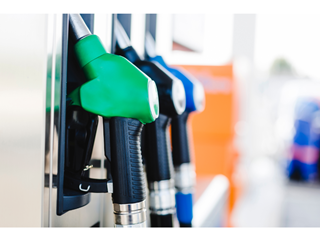
This was a larger drop than many experts had predicted.
The annual rate of inflation in the UK fell from 2.8% in February to 2.6% in March, according to the latest data from the Office for National Statistics (ONS).
While many experts had predicted that inflation would ease slightly, this was a more significant drop than most had expected. However, even though inflation has fallen compared to the previous month, it’s worth noting that it still means prices are 2.6% higher than in March 2024.
Inflation is a figure that tells us how the prices of goods and services have changed over the past year. The key metric is called the Consumer Price Index (CPI).
Even though inflation has fallen from the previous month, prices have still risen year-on-year.
This dip in inflation is encouraging for consumers, but it may be short-lived as it is forecast to creep higher in April and the following months due to rising household bills (including energy and water) and business costs as the increased rate of employers’ National Insurance contributions (NIC) come into effect.
Furthermore, as the impact of US President Donald Trump’s tariffs continue to be felt across the globe, it remains to be seen exactly what this will mean for the UK’s economy and future inflation figures.






Graph: Inflation dropped to 2.6% in March 2025.
In the transport sector, the cost of motor fuel fell by 5.3% in the month to March, compared with a drop of 2.5% in the previous month. This was reflected in the cost of petrol falling by 1.6 pence per litre between February and March to 137.5 pence per litre, with the cost of diesel also falling by the same margin to stand at 144.8 pence per litre.
Elsewhere, relatively low price rises in the recreation and culture sector, including games and toys, contributed to the drop in the overall inflation figure. They rose by 2.4% in the year to March, the lowest rate recorded since October 2021, and significantly lower than the 3.4% annual rise in February.
On the other hand, prices in the clothing and footwear sector rose by 1.1% in the year to March after falling by 0.6% in the year to February. It’s not unusual to see prices rise in this market as we enter the spring, but March’s increase was particularly significant after a surprising drop in prices in the previous month.
Following the recent market turmoil, it is likely that providers will be closely watching swap rates for any volatility. Investors should also be cautious to avoid making any spur of the moment decisions with their pots because, despite savings rates falling in recent times, the number of deals paying inflation-busting rates has surpassed 1,600. Markets have also proved that they can overcome periods of instability.
During the run-up to the new 2025/26 tax-year, easy access cash ISAs thrived as providers battled it out for the top spot, while other ISA rates also saw some improvements. However, since its arrival, some of the top rates have tumbled, with three-year fixed ISAs taking the largest blow, seeing a 0.22% drop in just three weeks. Consumers still waiting to pull the trigger on a deal would be wise to act fast as the current market-leaders may not stick around for long.
Savers looking to invest for longer for a guaranteed return will find that they are able to get more competitive returns on a five-year ISA compared to its shorter-term counterparts. Alternatively, fixed bonds continue to pay higher rates, but savers will need to be more cautious with these as they could breach their Personal Savings Allowance (PSA).
Switching accounts is key for any saver who finds that their loyalty is not being rewarded, and they should be open to considering lesser-known brands. As is the case with any account consumers wish to open, they should take time to review the terms and conditions to ensure that it suits their needs.
More than 1,600 savings accounts can offer returns that beat the current rate of inflation. This includes 185 easy access savings accounts and 715 fixed bonds.
See our charts to compare the leading savings rates.
Information is correct as of the date of publication (shown at the top of this article). Any products featured may be withdrawn by their provider or changed at any time. Links to third parties on this page are paid for by the third party. You can find out more about the individual products by visiting their site. Moneyfactscompare.co.uk will receive a small payment if you use their services after you click through to their site. All information is subject to change without notice. Please check all terms before making any decisions. This information is intended solely to provide guidance and is not financial advice. Moneyfacts will not be liable for any loss arising from your use or reliance on this information. If you are in any doubt, Moneyfacts recommends you obtain independent financial advice.